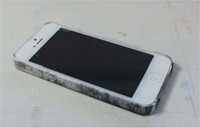
I urge you to consider taking pictures of your painting process. Your photos will act as a visual journal, helping you remember what you did. It is also an interesting exercise to observe your process from an outside point of view. Once you are comfortable with your skill level, you might be interested in sharing your techniques with others, sharing pictures of your progress or sharing behind-the-scenes photos on social media.
Today’s digital point-and-shoot cameras offer terrific quality and might be all you will need for documenting your process for yourself or a website or blog.
If you want to share pictures of your process on social media, a cell phone works well.
If you are taking pictures for publication or any kind of printed document, you might want to invest in a digital SLR that offers good resolution settings and options for taking pictures in RAW format. You will also need a lighting kit with two light stands (and fluorescent light bulbs) that you can place on either side of your work at 45° angles.
CLICK IT! Visit ArtistsNetwork.com/fearless-watercolor for clickable links to great resources for photographing your art.

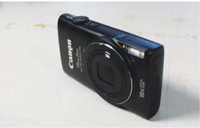
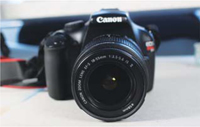
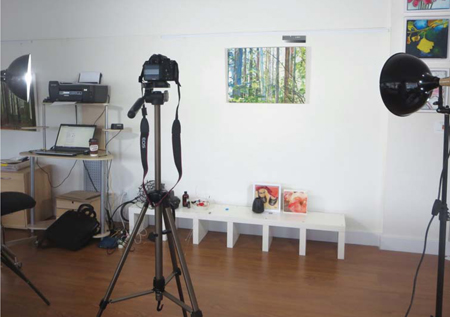
Setting up two fluorescent lights at 45° angles to your painting will give you the best light for taking pictures.
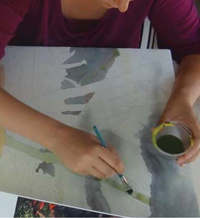
You might be surprised by what you see if you record your painting process.
Taking videos is also a great way to see yourself work from a different perspective. You will need a video camera, a tripod, good lighting and video processing software. The software should allow for reframing, time-lapse photography, captions, titles and formatting.
Yes, seeing yourself painting in real time might be a bit boring, but a time-lapse video of yourself working is a fun and interesting experiment. It gives good insight into your working process because accelerating the frame rate removes much of the hesitation and “thinking” time. You see only the action and you get a better perspective of what you did from start to finish.
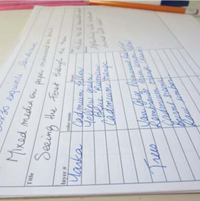
Pictures and videos act as a kind of visual reminder of what you did. But it can also be interesting to take notes. Filling out a form for each painting project can help you remember details, like what colors you used and what type of paper. You can keep track of particular mixes of colors you like, how a paper reacted and what techniques you used. Sure, the details might be fresh as you are painting, but you will most likely forget them after a while. And they might come in handy if you have to write about a particular painting later on.
DOWNLOAD IT! Visit ArtistsNetwork.com/fearless-watercolor to download Sandrine’s Painting Project Details form.
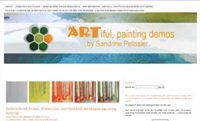
If you are comfortable with sharing your work or your process online, maintaining a blog is a fun way to keep an online art journal. You can share your techniques with step-by-step tutorials, speak about what inspires you and provide updates about your exhibitions or open studios.
CLICK IT! Visit Sandrine’s blog: PaintingDemos.com.
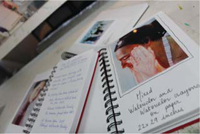
Having a way to present your work to potential customers, galleries or visitors to an exhibition is always useful. I like to make handwritten portfolios with pictures of my paintings. I’ve noticed that visitors to my studio like to browse through them; it is also a nice way to get the conversation going. People will talk about what they like in your work, or sometimes they will mention they have seen a particular painting somewhere.